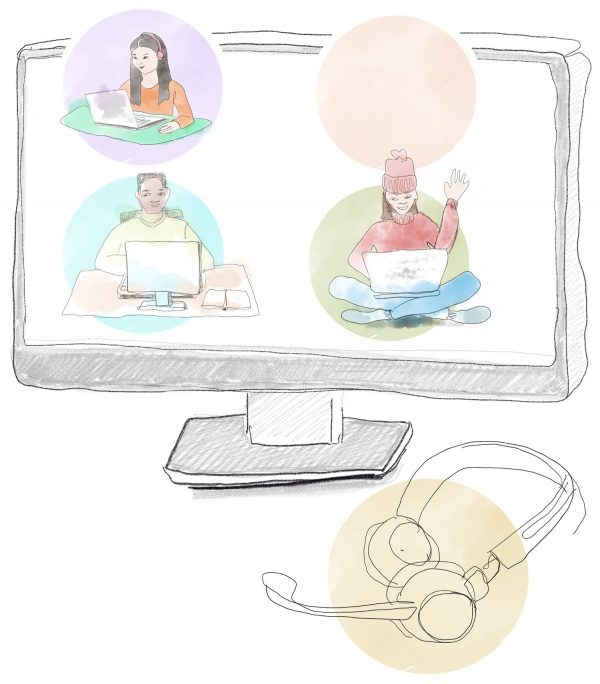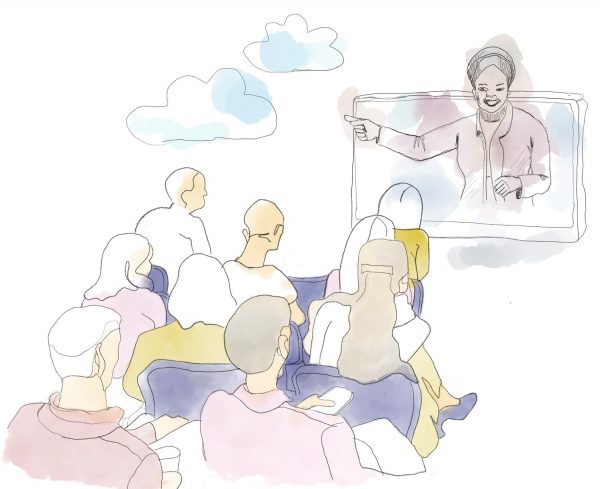Teresa Chen (MA), Senior Lecturer, Digital Solutions, Lapland University of Applied Sciences
In this fast-changing world where interdependency has become a reality, higher education institutions (HEIs) should be at par with this phenomenon. HEIs see the need for cross border collaboration to foster dialogue for mutual knowledge gain. Talents and competences are varied and wide-spread across the globe which HEIs need to tap and hone to build capacities among students in order for them to prosper as professionals in the globalised world. Knowledge sharing and acquisition forms the foundation for international collaboration during which knowhow is exchanged and new perspectives are gained.
Internationalization in education institutions is a way to democratize education for knowledge acquisition. It is a way to “decolonize” own minds to seek knowledge from greener pasture for there are more ways to teach and learn in the areas of knowledge creation. (1) Lapland University of Applied Sciences is cognizant of the topical trend in Finland with the change in demography and needs for talents from abroad. The UAS has an established network of international partners and has been involved in various international activities to enhance its global reach and address the strategic issues concerning internationalisation. This write-up illustrates a few ventures the UAS undertook in collaboration with international partners.
Mobility
Mobility between HEIs is a form of knowledge exchange where specific “transactional benefits” are experienced especially on individual students and staff levels. However, in order to optimally benefit from international activities “generative partnership” would prove to be more advantageous where resources are combined to co-create knowledge. (1)
Despite being inhibited by the Covid-19 pandemic, with the aid of technology Lapland UAS along with its Indian partner, Kadi Sarva Vishwavidyalaya (KSV), collaborated in the autumn of 2020 to bring together groups of students of both partners for knowledge exchange classes. The purpose was to cultivate interdisciplinary knowledge in areas such as communication, information technology and digital arts in addition to acquiring broader perspective on cultural variations. In the words of Dr Shivani A. Trivedi, Chief Coordinator, Women Entrepreneurship Cell at KSV, “joint activities among students from international cross-culture levels have helped break the communication barrier and encouraged the exchange of creative thinking abilities. Through these joint activities exchanges of pedagogy among staff along with the use of different virtual teaching tools are also observed. Such activities could be extended in a form of weekly or monthly training programs in areas including Entrepreneurship and Innovations to cultivate understanding of cross-border entrepreneurship.”
Further, Dr Jinal Joshi, director of international affairs at KSV added that “such activities enhance the capacity of not only students but other mentoring staff members, faculties, and institutions as well.” Jointly producing programs and curriculum for broader applications in sustainable development in learning and knowledge acquisition could be a major gain in mobility. Obviously, this would require wider input from committed academic staff and supportive management. Clear institutional strategy with outward rather than inward view would form a solid base.
Online collaboration
Technology has aided in collaboration among HEIs immensely as apparent during the current COVID-19 pandemic. With the advances in technological tools and platforms the ease of collaboration has improved which could aid in furthering mutual capacity building among HEIs. Collaborating online with digital tools and platforms offer broader access to education without the hassle of traveling that could subsequently result in cost savings. (1) This also avails greater interaction between partners.
Lapland UAS partnering in the BRIDGE project (https://kolarcticbridge.com/) could be mentioned as a model for how international partners collaborate across borders efficiently with the aid of digital means. The project has successfully used the digital tools to its advantage in bringing together various stakeholders such as academic staff from the partnering HEIs along with their students and the regional enterprises of the Kolarctic region. As the project’s lead partner, Mr Peter Fischer from UiT – The Arctic University of Norway expressed, “Since we know each other well and had the opportunity to previously interact face-to-face therefore shifting to collaborate online for project activities was smooth. Even the student-teams collaborated well.”

Illustrator: Pia Keränen, Lapland UAS (2021)
Internationalisation at home
Online collaboration could further aid in internationalization at home especially for those who are unable to be travel for various reasons, such as family and work. Staff and students from abroad are involved with local learners to create cross cultural understanding and to learn how each could mutually gain from others in terms of acquiring human understanding and socio-economic collaborative benefits. This could open paths for those seeking international business activities and careers. Additionally, bringing people together for cross-cultural dialogue and learning, in enhancing communication to establish better understanding for optimal acquisition of skills from each other. (1)
A case in point is the international master programme (MBA) students of Lapland UAS who are mostly working professionals with families and are therefore rather constricted in terms of participation in mobility abroad for an extended period of time. Through joint collaboration between Lapland UAS and IILM University, India, a common lecture session was held for the MBA students in autumn 2020. Professor Bidisha Banerji shared knowledge on the “two worlds” (Indian and Finland) with statistical facts, sustainability, economic and social development. The students subsequently utilised the knowledge acquired from the lecture in tackling their course assignment by answering the question “How are the global challenges facing Nordic countries and India similar yet dissimilar?” The students gained insights into another world without stepping out of their own.

Illustrator: Pia Keränen, Lapland UAS (2021)
Education export
A good reputation and professionals equipped with current pedagogy have made Finnish education and knowhow in demand internationally. Finnish HEIs generally encourage innovative and sustainable environment for learning. (2) The expertise provided by the Finnish educators could facilitate capacity building in partnering organisations looking for alternative ways of imparting knowledge and learning.
As an example of capacity building, a week-long ‘Train the Trainers’ programme could be cited. It was held at the Tornio campus of Lapland UAS in October 2019 and hosted by Senior Lecturer Anthony Okuogume for staff members of Central University of Technology, South Africa. During the week-long programme the participants were provided insights into the Finnish pedagogical approaches to learning environment including ecosystem, resources allotment and leadership issues. One of the participants wrote in the feedback that “I learned a lot about competency-based education in an entrepreneurial and innovative context.”
Reiteration
It is apparent that working in isolation is not an option. Therefore, international relationship building must first be pursued for meaningful partnerships. It is important to understand cross cultural peculiarities in order for partners to mutually benefit from international collaboration by identifying and addressing common strategies. Finland being a small nation in terms of population size needs to constantly seek markets abroad for domestic enterprises to thrive. (3)
Through education institutions people are prepared to recognise and hone the opportunities available globally. The preparatory phase begins at home when students are made aware of the significance of internationalization and, how to recognize and optimally benefit from these opportunities. With dedicated academic staff and supporting management students would be able to sharpen their international competences to benefit their future.
References
1. The Future of International Collaboration and Academic Partnerships 13 Nov 2020. International Association of Universities. https://youtu.be/ps7Z5m8ALdA Accessed 09.09.2021
2. Ministry of Education and Culture (2010). Finnish education export strategy: summary of the strategic lines and measures. Publications of the Ministry of Education and Culture 2010:12. okm12.pdf (valtioneuvosto.fi) Accessed 9.9.2021
3. Confederation of Finnish Industries (2021). Finnish Industries encourages companies to recruit foreign students studying in Finland | Elinkeinoelämän keskusliitto (ek.fi) Accessed 09.09.2021
Keywords: international collaboration, knowledge acquisition, capacity building